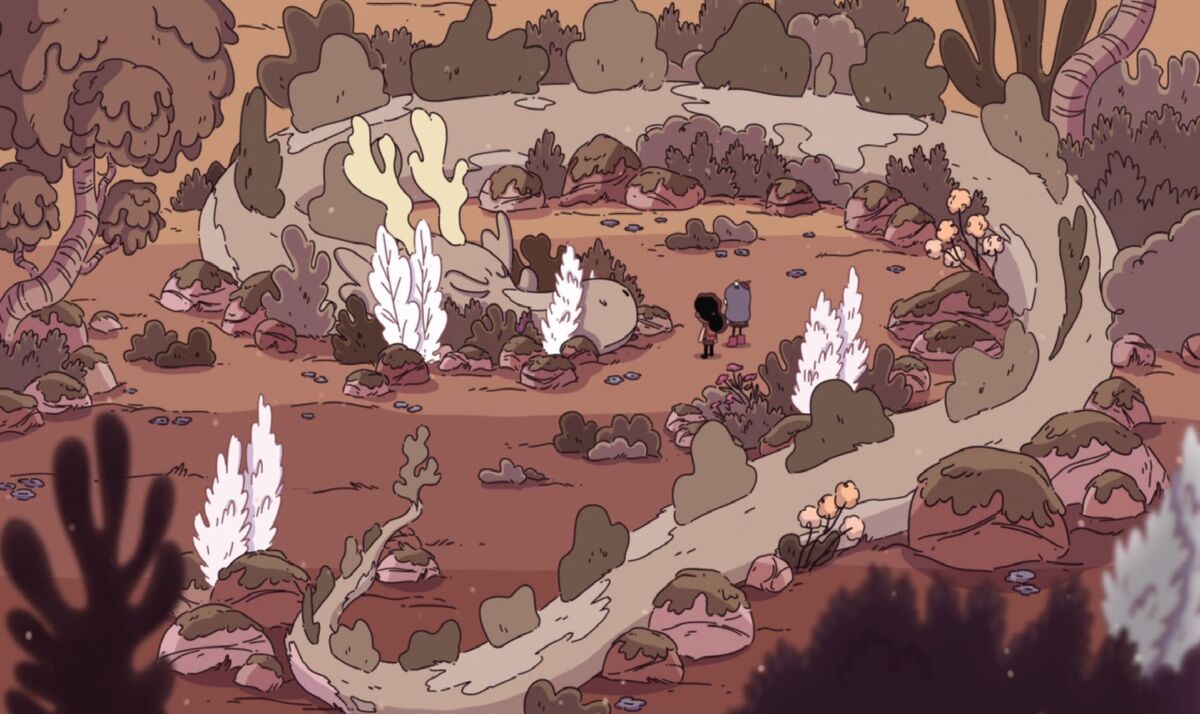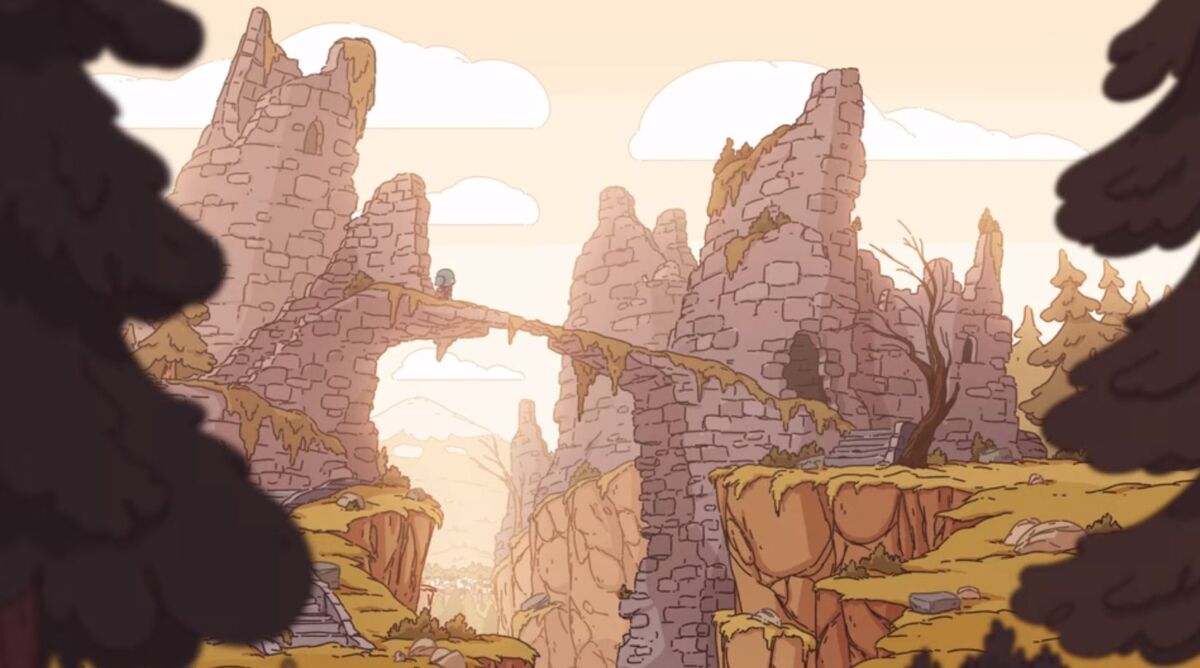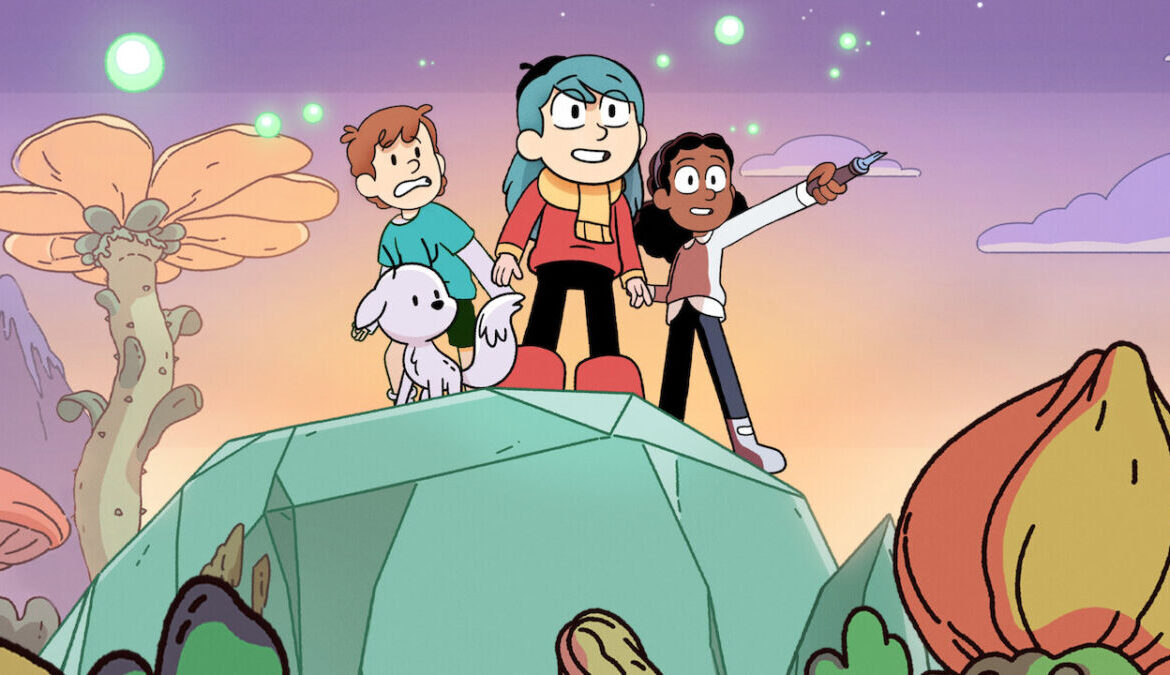While boasting a perfect score on Rotten Tomatoes with the site’s consensus calling it “animated magic of the highest order,” Hilda was never that popular of an animated show, especially when compared to shows from competing networks like Disney’s Amphibia or The Owl House. The movie, Hilda and the Mountain King, was intended to be the show’s finale, especially since The Mountain King is the final book of the Hilda graphic novels.
However, the show was renewed for another season beyond The Mountain King, and so the writers were given the chance to take the animated title in brand new directions. Unfortunately, these directions strayed too far from what initially made Hilda great, resulting in a messy final outing that’s too self-serious to be much fun. Here’s why Hilda’s final season is easily its weakest one.
Dissecting the Unexplained

One of the most magical things about Hilda has always been how commonplace the magical creatures were to the human characters. Dragons and trolls were to the citizens of Trolberg what tigers and lions are to us — we acknowledge they exist, but we don’t go out of our way to regularly encounter them.
Well, except for Hilda, of course. There was also something so charming about Hilda just being a regular girl who grew up in the wilderness with her mom, becoming such a curious adventurer in the process. The whole show felt straight out of a kid’s imagination, each episode atmospheric with childlike wonder.
Season 3, on the other hand, seems discontent with just letting things be. Despite never being brought up until the movie (and even then, in only one line), nor ever being in the graphic novel series, Hilda’s dad appears in this season and is given a bigger focus than main characters like Tontu, Alfur, or Frida. The cliché of a young protagonist searching for an absent parent is so common that there’s an entire TV Tropes page all about it.
Not only is this such a predictable and boring direction for the writers to take, but this huge focus on Hilda’s father feels done out of obligation, as if the show refused to end without every single possible mystery solved. Some of these mysteries – like why Joanna moved to Trolberg – don’t even need to be answered, and yet, the season constantly gets into questions like Hilda’s extended family and past, where the magical creatures come from, and even why Hilda is such an explorer.
The big question is, why? We’ve spent two seasons and a movie not needing all this backstory and lore. Can’t Hilda just be an inquisitive kid with a single mom? Can’t the magical creatures just be? They certainly could for five years, so why begin all this explaining now?
All this reverse engineering just leads to a lot of information dumping, a cornucopia of telling and not showing, with several episode moments feeling like the characters reciting from an encyclopedia. Dissecting the magic and history of a show like Hilda is like dissecting a frog: it isn’t fun and the frog dies.
Bigger Isn’t Always Better

For most of its run, Hilda has been an episodic show, following the “creature-of-the-week” format despite every season being released all at once. This made it so that every name in Hilda’s big cast of characters got at least one storyline per season, and the world of Hilda felt alive with something mystical happening in every corner.
The small-scale stories told in a bite-sized 20-minute length also emphasized the childlike wonder of the show, as if you were reading a short story collection rather than a novel.
Season 3, however, almost entirely does away with this episodic format, with a serial narrative so far removed from Hilda’s usual antics that this season feels like a spin-off rather than a genuine part of the show. The first two episodes have Hilda and her friends visiting a new setting called Tofoten, a town a literal train ride away from Trolberg. They do so again in the final episode — a far-too-lengthy 80-minute finale that feels like a backdoor pilot to a show taking place in Tofoten.
The few episodes that do follow the “creature-of-the-week” format are unquestionably filler, the creatures largely uninteresting and the writing lacking serious energy, and the only parts of these episodes worth paying attention to are the ones regarding Tofoten or Hilda’s dad. With so much focus on these season-long arcs, every character outside of this arc feels sidelined or forgotten. This is meant to be Hilda’s final season, and yet, many of the show’s established characters either only appear in cameos or simply follow Hilda around to be her sidekicks.
It’s incredibly reminiscent of when an animated show like SpongeBob SquarePants or The Simpsons gets a theatrical movie, and recurring characters like Sandy or Principal Skinner say only one line. Trolberg stops feeling magical and alive, and instead it just becomes a pit stop in Hilda’s hero’s journey.
Now, an ongoing plot could work if only Season 3’s plot wasn’t so joyless and contrived. Where Seasons 1 and 2 had so many awe-inspiring and humorous moments with every new discovery of Hilda’s world, the characters in Season 3 are constantly in dire peril in an effort to raise the stakes.
Season 3 wants to feel bigger and more serious, so there are significantly fewer jokes, and the stakes are now being trapped in dark, eerie worlds or being attacked by scary creatures. It’s all just so bleak and dreary, and I can’t help but be reminded of a time when Hilda and her friends convinced a dragon to help them by giving her flowers.
Trying Something New

Ultimately, though, you have to give the Hilda writers credit for being ambitious and attempting something new, even if it didn’t work out. There are some good parts here — seeing Hilda and her friends as teenagers was especially endearing, the animation is still gorgeous, and while they barely did anything, it was still nice to see so many beloved characters one last time before the show ended.
If the writers really wanted to end Hilda with a bang, they should’ve been focusing on going forward rather than going back. The best endings always feel like new beginnings, so seeing these characters try new things and go on unexpected paths would’ve been a fun change of pace. Maybe the trio join a new club rather than the Sparrow Scouts, or maybe Alfur gets promoted from being the reporter on Trolberg.
An ongoing plot is fine, but why does it have to be so heavy and convoluted? Season-long arcs can be simple and light-hearted while still remaining interesting and fun. If you really want to do a more focused story, too, fully commit — don’t bother with episodic entries if they’re just going to feel done out of requirement.
These days, you never know how long an ending will actually stay an ending, but if this truly is the last time we’ll see Hilda, Frida, and David, a less-than-stellar final season won’t change the fact that spending time and exploring the world of Trolberg with them has been an absolute blast.
READ NEXT: 10 Shows That Were Canceled Too Soon
Some of the coverage you find on Cultured Vultures contains affiliate links, which provide us with small commissions based on purchases made from visiting our site.

